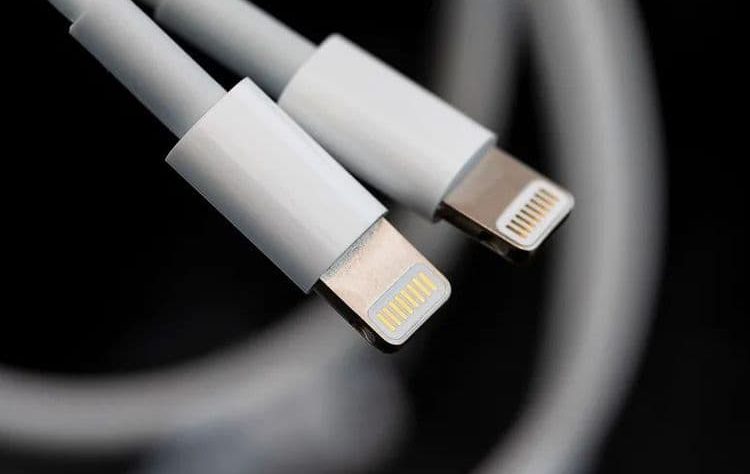Although most smartphones today, especially devices with the Android operating system (OS), have switched to the USB-C connector, Apple’s latest cellphone, the iPhone 13, hasn’t switched from the USB Lightning connector yet.
So far, Apple has not provided a comprehensive reason why the iPhone uses a USB Lightning port instead of USB-C.
Apple only says that switching from Lightning to USB-C will actually increase the amount of electronic waste, as new iPhone users will have to buy a new USB-C data cable, instead of the Lightning they might already have.
However, according to some reports, Apple’s decision to still use the Lightning connector in their iPhone lineup seems to have something to do with the potential profits that can be generated from the accessory business.
Because, because the iPhone 13 still uses the Lightning connector, Apple will actually benefit from users who buy accessories that support the cellphone.
Some of them include various Lightning adapters, original data cables, USB dongles, and various other Apple-made accessories.
In addition, they will also get a license fee from MFi (Made For iPhone/iPod/iPad) vendors who make adapter products or data cables that adopt Lightning connectors.
If the Lightning connector on the iPhone is removed and replaced with USB-C, then Apple will actually lose one source of revenue from the accessory segment.
Moreover, the privilege of selecting which accessories can be connected to the iPhone and other Apple ecosystems will slowly disappear.
The reason is, the presence of USB-C will help make the iPhone can be paired with various accessories available on the market from various brands, ranging from keyboards, mice, gamepads, USB drives, and so on.
There’s still MagSafe
However, there is still one way for Apple to make a profit, if they intend to eliminate the Lightning connector completely, which is to replace it with a wireless charging method.
That way, Apple can slowly lead people to switch to wireless chargers.
Moreover, last year Apple introduced a new accessory in the form of a MagSafe power bank (battery pack) when it released the iPhone 12.
MagSafe is designed so that it attaches to the back of the iPhone for wireless charging.
In addition, Apple also does not seem to want to provide an opportunity for accessory vendors who rely on the USB-C connector, taking all the potential profits and controlling the iPhone ecosystem from the accessory sector.
At least that’s according to the Apple analyst who often leaks plans for the next Apple product, Ming-Chi Kuo.
In March, Kuo said that Apple would not switch from USB Lightning, at least until they released an iPhone without a charger connector (portless).
The iPhone portless design has also been circulating before and was predicted to be present on the iPhone 13, but it was finally refuted after the device was launched.
Mobile Phones in Europe Must Use USB-C
For your information, Apple’s strategy to continue using the Lightning connector in its iPhone lineup has recently become an interesting topic to discuss.
The reason is, the European Union commission recently planned to roll out a new rule that requires all smartphone and electronics manufacturers, including Apple, to equip their products with a USB-C charger connector.
The regulation is intended to help reduce electronic waste and make it easier for consumers without having to have multiple chargers.
In theory, if all smartphones and electronic devices use a USB C port, consumers only need at least one charger to be used for several devices.
“European consumers have long been frustrated with incompatible chargers piling up in their drawers,” said European Commission executive vice president, Margrethe Vestager.
Will Barrier Innovation
Responding to the plan, an Apple spokesman said it actually really cares about the consumer experience.
However, the obligation to use one type of connector will actually hinder innovation, rather than encourage it. So, in the end, the consumer will be harmed.
“We look forward to continued engagement with stakeholders to find solutions that protect consumer interests, as well as the industry’s ability to innovate and deliver new technologies that appeal to users,” an Apple spokesperson said in a statement.
Regarding environmental issues that became the reason for the European Union Commission earlier, Apple claims to have committed to protecting the environment and has implemented carbon neutrality for all of Apple’s carbon emissions worldwide.
Previously, Apple also gave a statement about the obligation to use a USB-C connector, when the EU Commission’s rules began to be detected in 2020.
At that time, they explained that government intervention would have an adverse effect on consumers in Europe who had purchased Apple products, in addition to having a negative impact on the environment.
“Legislation will have a negative impact and disrupt hundreds of millions of active devices and accessories used by our customers in Europe, and even more Apple customers around the world,” said Apple, as quoted by KompasTekno from TheVerge, Tuesday (28/9/2021).

